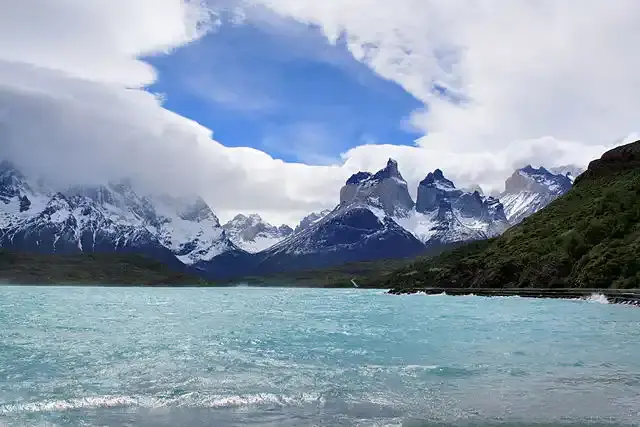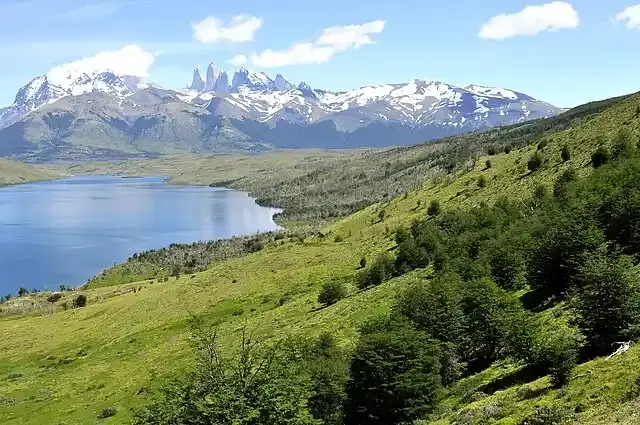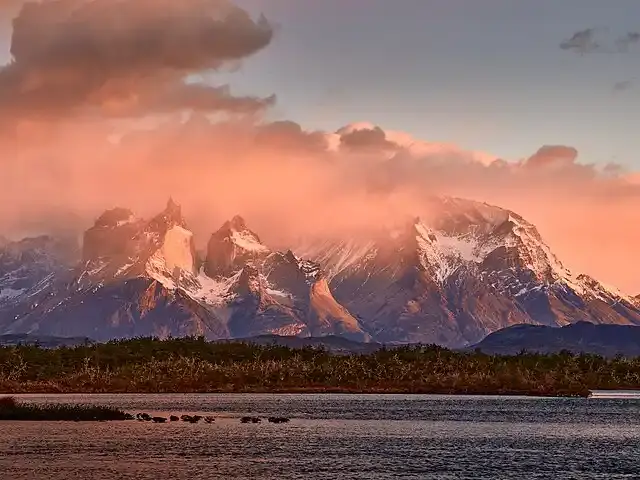Excursion to the Heart of Patagonia: Torres del Paine Route Guide
Patagonia, the picturesque southern region between Argentina and Chile, is one of the world's most fascinating adventure destinations. Among the most famous landmarks of this area, Torres del Paine National Park is a paradise for hiking and nature enthusiasts. The Torres del Paine Trail, which spans stunning mountain scenery, blue lagoons and glaciers, is undoubtedly one of the most charming and exciting trails for adventurers around the world.
Show key points
- Torres del Paine National Park in southern Chile is a world-renowned destination for adventurers drawn by its striking landscapes of mountains, glaciers, and lakes.
- The park's famous W and O trails offer varied hiking experiences, with the W Trail being more accessible and the O Trail providing a more remote and physically demanding journey.
- Wildlife in the park is abundant and diverse, including species like guanacos, condors, and rare birds, offering nature lovers an exceptional chance for wildlife observation.
- ADVERTISEMENT
- The best time to visit Torres del Paine is during the peak season from November to February for favorable weather, although spring and autumn offer more tranquility and natural beauty.
- Proper preparation is crucial, requiring suitable clothing, camping gear, and advance reservations for campsites, as well as awareness of the park's unpredictable climate.
- Unique highlights of the trail include the famous granite towers, the spectacular Valle del Francés, and the majestic sight of glaciers calving into vivid blue lakes.
- A hike through Torres del Paine offers more than just physical activity—it is a profound encounter with the raw and majestic beauty of Patagonia that leaves a lasting memory.
Introduction to Torres del Paine

Torres del Paine is not just an ordinary national park, it is an exceptional destination that attracts thousands of adventurers from around the world. Located in southern Chile, the park is famous for its diverse terrain that includes towering mountains, deep valleys, and attractive lakes. The name "Torres del Paine" goes back to the three famous granite towers that dominate the skyline. These towers, along with glaciers and dense forests, make the park ideal for travelers looking for extraordinary.
Recommend
Why should you choose the Torres del Paine route?
If you are an adventure lover looking for a new challenge, the Torres del Paine Trail is the ideal choice. Not only does it offer stunning landscapes, but it also offers a unique experience that blends physical and spiritual challenge. During this route, you can enjoy the deep tranquility of nature and get away from the hustle and bustle of everyday life.
A trip to the heart of Torres del Paine gives you a unique opportunity to discover the Patagonian wildlife, where you can see animals such as guanacos, condors, and perhaps even the Patagonian tiger. In addition, the diversity of the climate in the garden means that in one day you may experience warm sunrises, cool winds, and even sudden rains. This diversity makes every step of the path an unforgettable adventure.
BEST TIME TO VISIT Torres del Paine
Choosing the perfect time to visit Torres del Paine depends on the type of experience you are looking for. The peak season runs from November to February, when weather conditions are milder and the skies are clear, allowing stunning views of the mountains and lakes. However, this season attracts the largest number of visitors, which can make some trails crowded.
If you prefer to enjoy nature in peace, spring and autumn (October and May) are an excellent option. During these periods, crowds are less and nature is at its best with wildflowers filling the lawns.
Torres del Paine Paths: available options

There are several options for exploring Torres del Pineh, but the most famous are the W track and the O track. Both routes offer distinct experiences, but differ in length and challenges.
1.Route W: It extends for about 80 kilometers and takes 4-5 days to complete. This route takes the shape of the letter "W" and passes through some of the park's most famous landmarks such as Torres Towers, Francis Valley and Lake Gray. This trail is an excellent option for adventurers looking for a medium-length excursion and allows them to explore the park's highlights.
Route O: It runs for about 120 kilometers and takes about 8 to 10 days to complete. This route is more challenging and requires high fitness, but it offers an opportunity to discover quieter areas away from the crowds. The O Trail allows you to see the back sides of the park, which are less crowded areas with landscapes no less beautiful than those offered by Masar
Preparing for the course
Preparation for a trip to Torres del Paine requires good preparation. It is essential to have proper equipment, including comfortable and waterproof walking shoes, warm and light clothing at the same time, a light backpack, and a weatherproof tent. It is also advisable to provide adequate amounts of food and water, as some areas of the park do not have facilities to purchase supplies.
Passes must also be obtained in advance, especially if you plan to camp in certain places along the trail. There are several campsites scattered along the trail that offer basic facilities such as bathrooms and kitchens, but it is preferable to book them in advance due to the high demand during the high season.
What you can expect along the route
When you embark on the Torres del Paine trail, you'll embark on a journey that takes you through a range of stunning landscapes. You'll start from green valleys where glaciers flow, through dense forests and meadows adorned with wildflowers, to the granite towers that loom on the horizon.
One of the highlights of the trail is the Francis Valley which is one of the most beautiful sites in the park. Here you can see glaciers flowing from the mountains and listen to the sounds of avalanches in the background, adding a sense of awe and grandeur to the journey.
Experience nature and wildlife

One of the most exciting aspects of Torres del Paine is the diverse wildlife you can encounter along the trail. Adventurers can see guanaco, a species of small camel that lives in Patagonia, along with birds of prey such as condors. For bird lovers, the park is an excellent place to observe rare species of birds.
The park's glaciers, such as the Grey Glacier, are highlights of the trip. Adventurers can take a boat tour to explore these rivers up close or even try canoeing in the nearby lakes.
Final tips for adventurers
Before setting off on the Torres del Paine trail, it is important to be aware of the rapidly changing weather in the region. Strong winds and sudden rains can be a big challenge, so always be sure to follow the weather forecast and prepare well.
It is also advisable to start the trail early to avoid congestion and to enjoy the most beautiful scenery in the early morning times when the weather is calm.
Torres del Paine is not just a trip to a national park, it is an epic experience that takes you through the heart of Patagonia's wild nature. Whether you are looking for a physical challenge or want to enjoy breathtaking landscapes, this path will leave an unforgettable experience in your memory. Get ready to challenge yourself and explore one of the most beautiful tourist destinations in the world.








